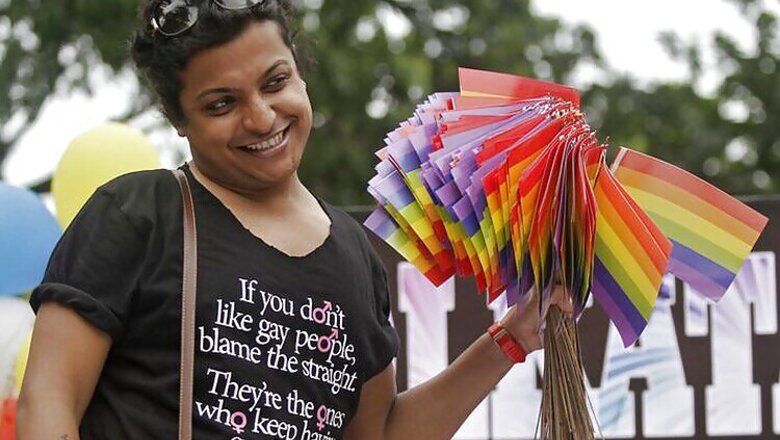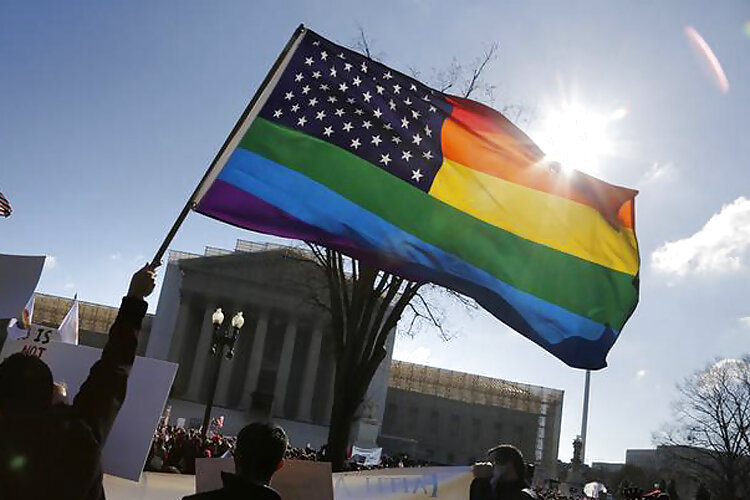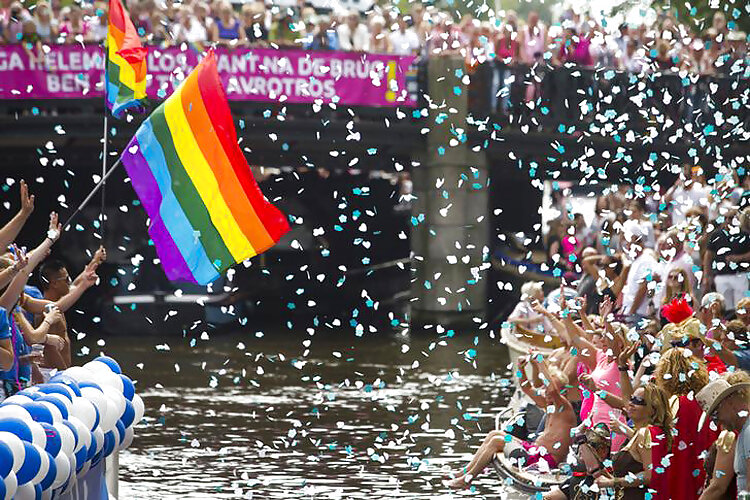
views
As and when pictures of LGBT parades or campaigns flash before our eyes, multi-coloured rainbow flags come to our notice. Ever wondered what this 'Rainbow Flag' denotes and how it came into existence?
The LGBT activists believe rainbow is a symbol of gay pride. The flag with 6 plain stripes is used across the world also as a symbol of recognition. Today, some LGBT individuals and straight allies put rainbow flags in the front of their yards or front doors to use as an outward symbol of their identity or support.
Not just the plain-striped flag, but many variations of the rainbow flag have been used. Some flags have the Greek letter lambda (lower case) in white in the middle of the flag or a pink triangle or black triangle in the upper left corner. The rainbow colours have also often been used in gay alterations of national and regional flags, for example the red and white stripes of the flag of the United States.

The first Rainbow Flag was designed in 1978 by San Francisco artist Gilbert Baker who created the flag in response to a local activist's call for the need of a community symbol. Using the five-striped "Flag of the Race" as his inspiration, Baker designed a flag with eight stripes. Baker dyed and sewed the material for the first flag himself.
The design may have been influenced by flags with multicoloured stripes used by various left-wing causes and organizations in the San Francisco area in the 1960s. The Rainbow Flag originally had eight stripes (from top to bottom): hot pink for sex, red for life, orange for healing, yellow for sun, green for serenity with nature, turquoise for art, indigo for harmony, and violet for spirit.
Handmade versions of this flag were flown in the 1978 Gay Freedom Day Parade.
Baker approached San Francisco-based Paramount Flag Company to make flags for 1979 Gay Freedom Day Parade but as they did not have the fabric for hot pink for mass production, Baker dropped the hot pink stripe. Later, Baker and Paramount agreed to drop the turquoise stripe, too, and also replace the Indigo stripe with royal blue.
Soon the six colours were incorporated into a six-striped version that became popularised and is till date, widely used by LGBT activists across the world.





















Comments
0 comment